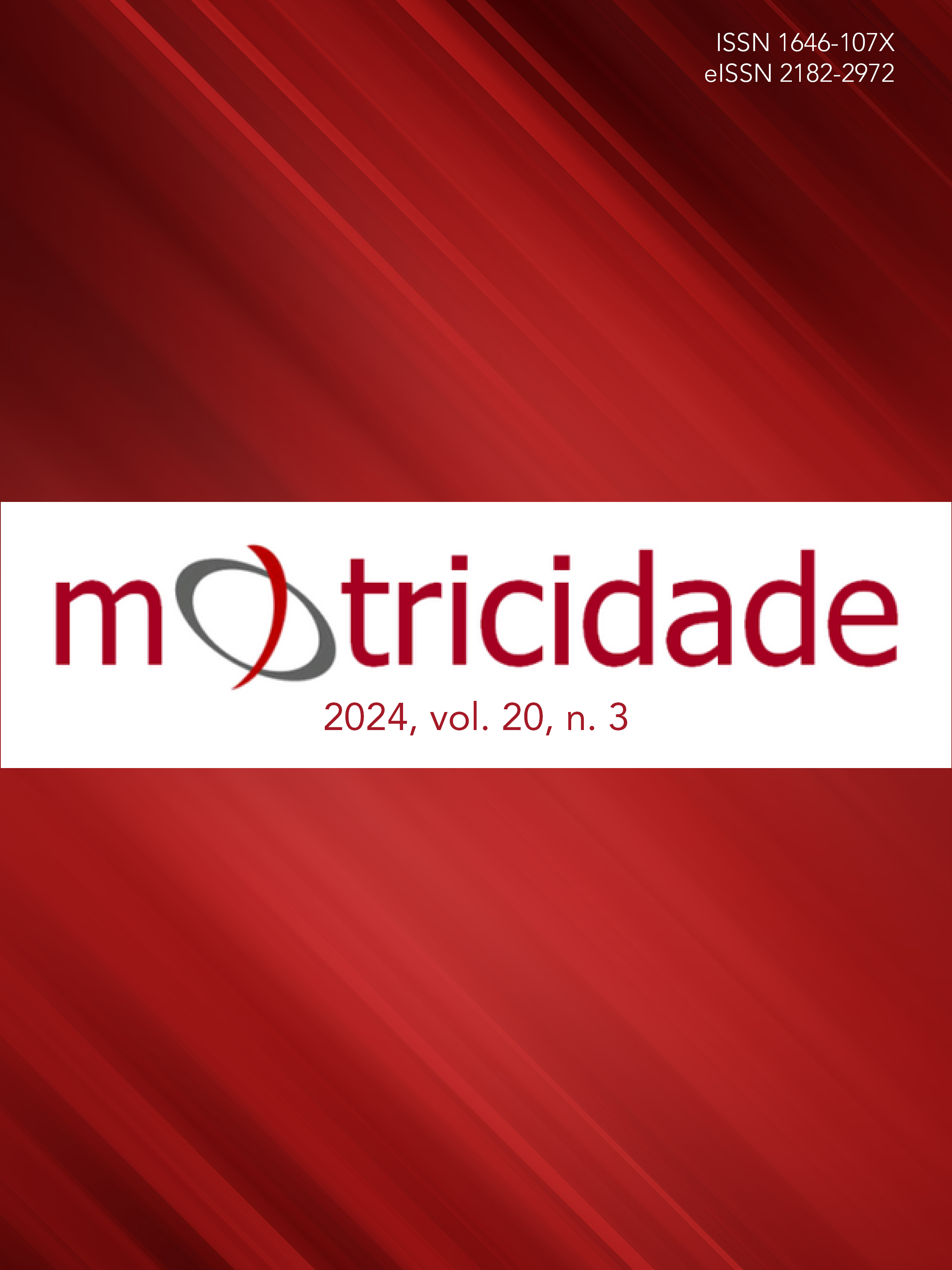Post-Activation Potentiation Enhancement of Countermovement Jump Performance using Velocity-based Conditioning Protocols with High-loads in Active Men and Women
DOI:
https://doi.org/10.6063/motricidade.33061Keywords:
Velocity-based training, power, strength, velocity loss, resistance trainingAbstract
Post-activation performance enhancement (PAPE) refers to the temporary improvement in physical abilities resulting from a previous conditioning activity (CA), and velocity-based resistance training has been proposed to optimise PAPE. The present study aimed to evaluate the optimal rest interval to induce PAPE in the countermovement jump using heavy parallel squats monitored by the velocity loss (VL) threshold. The study had a randomised repeated measures design, with three sessions that included a control session and two different squat conditions (80% of 1 repetition maximum (RM) with 10% and 30% VL of mean propulsive velocity). Ten men (age 21.9±1.16 years, height 1.8±0.04m, body weight 78.5±9.9kg, relative strength: 1.4±0.29kg×kg-1) and ten women (age 20.7±1.16 years, height 1.6±0.06m, body weight 56.9±4.67kg, relative strength: 1.1±0.19kg×kg-1) participated in the study. They had at least 1 year of experience with the back squat but no experience in power training. Measurements were taken at baseline and at six time points after the conditioning activity or rest period. The study found no significant effects between intervention and moment and no optimal rest time to induce PAPE, but women had significantly lower countermovement jump (CMJ) values than men(Mmen = 30.01, SE = 1.35; 95% CI 27.17 - 32.84, Mwomen = 24.33, SE = 1.35, 95% CI = 21.50 - 27.16), but when values were normalised to body weight, there were no significant differences. In conclusion, a single set of 80% 1RM in the squat to a VL of 10% or 30% is not sufficient to induce PAPE in CMJ; therefore, there is no optimal rest time.
Downloads
Published
Issue
Section
License
The authors of submitted manuscripts must transfer the full copyright to Journal Motricidade / Sílabas Didáticas Editions. Granting copyright permission allows the publication and dissemination of the article in printed or electronic formats, and copyrights start at the moment the manuscript is accepted for publication. It also allows Journal Motricidade to use and commercialise the article in terms of licensing, lending or selling its content to indexation/abstracts databases and other entities.
According to the terms of the Creative Commons licence, authors may reproduce a reasonable number of copies for personal or professional purposes, but without any economic gain. SHERPA/RoMEO allows authors to post a final digital copy (post-printing version) of the article on their websites or on their institutions' scientific repository.


